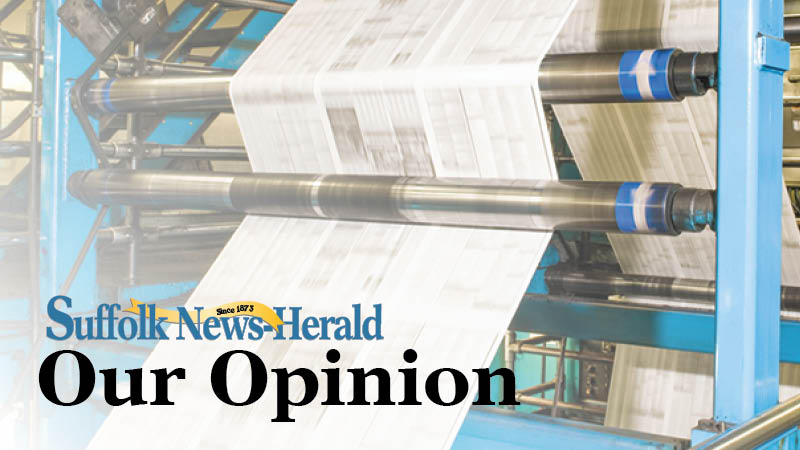Filming the police
Published 9:41 pm Monday, September 29, 2014
The police-involved shooting of an unarmed black teenager, Michael Brown — which took place in Ferguson, Mo., in August amid circumstances that are still the subject of intense debate — is the kind of situation Suffolk Police Chief Thomas Bennett hopes to avoid as a result of a proposal he put before members of the City Council last week.
At every meeting or conference he attends, he told the council during a retreat on Friday, the main topic of conversation is the Ferguson shooting and the riots that have taken place amid racial tensions wound tight by the situation.
Bennett believes one piece of readily available technology could have settled the situation in a hurry: police body cameras. If the officer who shot Michael Brown had been wearing a body camera and had turned it on in accordance with the policies of most police forces that use the technology, there would likely be no question what he saw on that fateful day, and determining whether he was justified in his decision to shoot the teenager would have been a much simpler task — and one supported by documentary evidence.
Studies show that police body cameras make everybody behave better. “Everyone is on their best behavior when the cameras are running: the officers, the public — everyone,” Topeka (Kansas) Police Chief Ron Miller states in a study released earlier this month by the Police Executive Research Forum in conjunction with the U.S. Department of Justice’s Community Oriented Policing Services.
The resulting report, “Implementing a Body-Worn Camera Program: Recommendations and Lessons Learned,” identifies the benefits and potential problems that would result from a community’s decision to outfit police officers with cameras capable of capturing and recording situations from an officer’s vantage point.
Among the intriguing results of the study were these statistics from the Rialto, Calif., police department:
- There was a 60-percent reduction in officer use-of-force incidents following camera deployment.
- Shifts with cameras had half the number of use-of-force incidents as shifts without cameras.
- And there was an 88-percent reduction in the number of citizen complaints in the year following camera deployment.
Clearly having cameras in operation caused everyone on both sides of the blue line to settle down. Most events did not escalate to the point at which an officer felt — rightly or wrongly — that the use of force was necessary.
“In the testing we did, we had a number of tenured officers who wanted to wear the cameras and try them out, and their feedback was very positive,” Sheriff Douglas Gillespie of Las Vegas, stated in the report. “They said things like, ‘You’ll be amazed at how people stop acting badly when you say, “This is a camera,” even if they’re intoxicated.’ And we also know that the overwhelming majority of our officers are out there doing a very good job, and the cameras will show just that.”
The same is undoubtedly true of Suffolk’s police officers. But a body camera system would help give the claim the strength of documentary evidence.
There are questions of privacy and access to be addressed before such a program could be fully implemented. Chief Bennett should set about addressing those issues now, so the city can move ahead on this worthwhile proposal.



